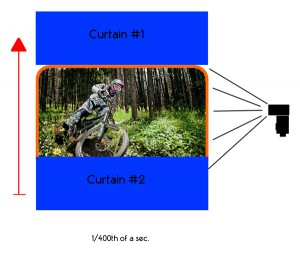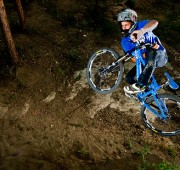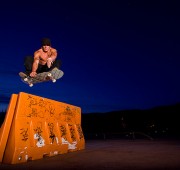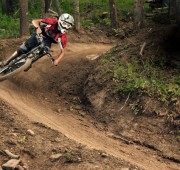Flash Sync Speed Explained
A good friend of mine and extremely talented action sports photographer once told me that I need to use flash to be successful and ahead of the crowd. I guess he was right! There is only one little problem.
Action sports are fast. Flipping boards, spinning bikes or flying athletes all occur at lightning speed. Our main task as action sports photographers is to freeze the motion (unless you are using blur as a creative effect). If you open any photography book (or look around APS) you will see that you need fast shutter speed to freeze motion.
Whether you are using the flash on or off camera, and you want to get full power out of your flash, you will run in to the sync speed limitation of your camera. Depending on the model, most cameras have a maximum flash sync speed between 1/160th and 1/250th of a second.
Flash Sync Speed is the maximum shutter speed at which the camera can take a correct exposure using flash. Most current DSLRs have two shutter doors "aka curtains" that slide in front of the sensor every time you press the shutter release. Usually they go from the bottom to the top of the frame. The first curtain starts moving upwards and the second one follows.
When you are with in the recommended shutter sync speed the second shutter doesn’t start following until the first one reaches the top of the frame. Then the flash is introduced and the second shutter starts moving up to finish the exposure. All this happens in a fraction of a second.
When you go over the recommended sync speed the first shutter reaches the top and the second one is already following. So when the flash is introduced, part of the frame if covered by the second curtain and doesn’t get exposed by the flash. As you can see from the graphics at 1/400th of a second just the bottom of the frame is covered. At 1/640th even more of the frame is covered and at about 1/1250th you will not get any flash at all in your exposure.
As an action sports photographer you are probably terrified by now, because 1/250th of a second won’t get you far with freezing motion. Don’t worry about this because there are a few different ways to deal with sync speed, and other factors like flash duration and ambient light come in to play. We will cover all of these in the advanced section in an upcoming article later this week.
Now that you understand how the curtains work, you can start pushing the shutter speed up a little and experimenting. Compose so that the athlete is in the top 1/2 of the frame during daylight, push the shutter speed up a bit more (1/320th, 1/400th, whatever you can get away with), and you can still get a fully lit athlete!
Understanding how sync speed works is essential for action sports photographers to capture sharp and fully lit images.
Next Guide Article: One Off-Camera Flash Technique












on
or, get the new mini/flex pw’s for Nikon – hypersync all the way to 1/8000!
on
Yes, you can sync up to 1/8000th of a sec. but you lose a ton of power. The range of the flash goes from maybe 90 feet to 3 feet. That is because instead of releasing one burst of light, the flash has to stay on for the whole duration of the exposure. It would be OK for skate shoots, but what if you are shooting a snowboarder hitting a 70 foot high jump?
Pingback: Basics of Off Camera Flash - Action Photo School | Photography Tips